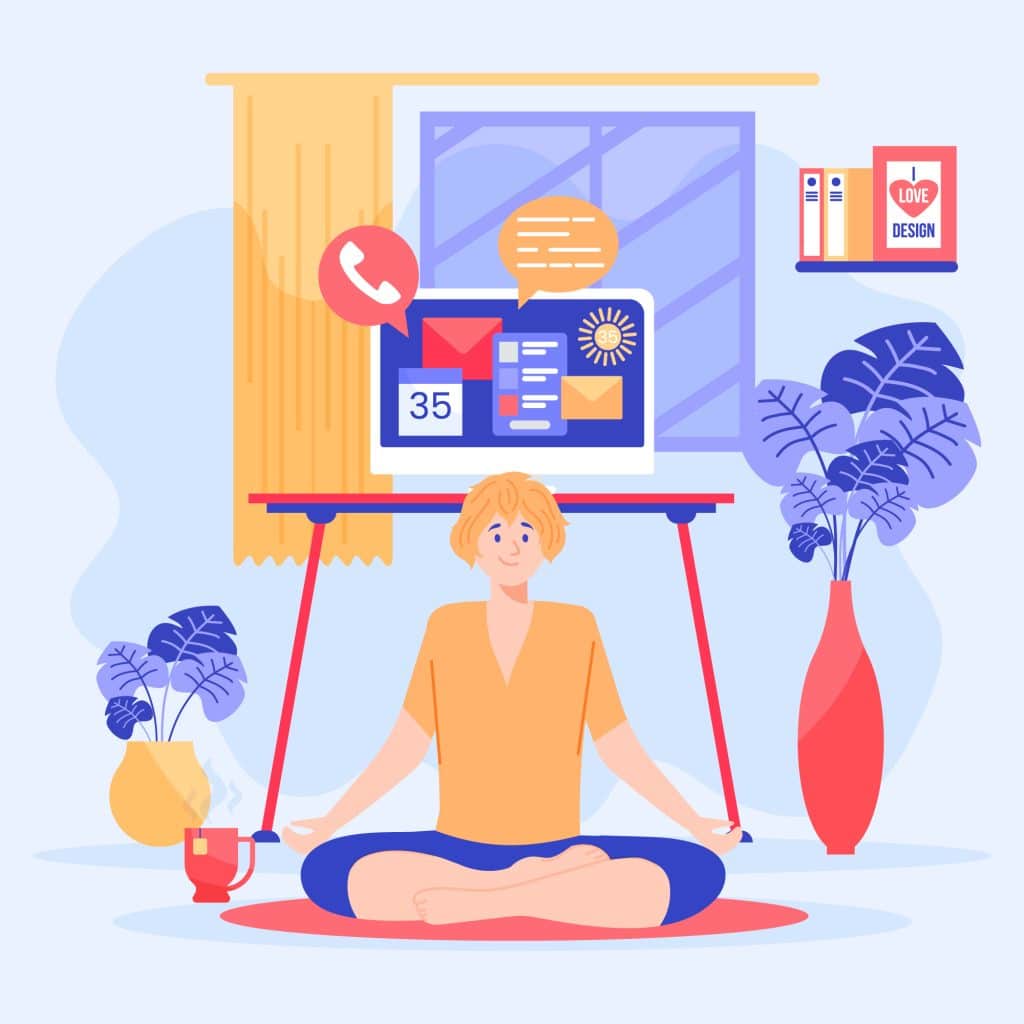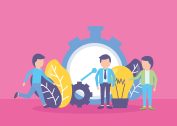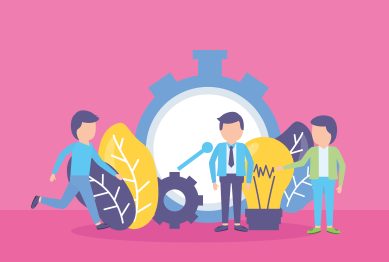In 2025, digital clutter is no longer optional—it’s hazardous. Between endless notifications, overflowing inboxes, and accidental digital hoarding, our digital environments pose real threats to mental clarity and physical health. That’s why digital decluttering and digital minimalism are emerging as essential self-care practices. Experts now emphasize that clearing virtual chaos relieves cognitive overload, reduces anxiety, and improves sleep. This article explores how intentional digital habits can help you reclaim your well-being.

The Science Behind Digital Clutter and Stress
Even invisible clutter—such as digital files, open browser tabs, and unread emails—can trigger the same stress responses as a messy room. Research from cognitive psychology indicates that cluttered digital environments increase cortisol production and reduce decision-making capacity. Just as physical clutter overwhelms the senses, digital overload chips away at mental energy, leading to fatigue and anxiety.
Digital Minimalism: A Trend Transforming Mental Health in 2025
Digital minimalism, the practice of using technology with intention, is redefining how people relate to devices. The idea is simple: keep only the digital tools that enhance your values or goals. People are increasingly cutting back on social media, deleting non-essential apps, and setting strict screen-time boundaries. Many report sharper focus, improved emotional regulation, and stronger interpersonal relationships as a result.
Mental Benefits of Digital Decluttering
Reduced Anxiety and Stress
Eliminating unused apps and muting unnecessary notifications reduces cognitive noise. People who regularly tidy their digital space say they feel calmer, more focused, and less emotionally scattered.
Better Focus and Efficiency
Multitasking across tabs, devices, and platforms diminishes our brain’s capacity to concentrate. Digital decluttering improves task completion, deep work, and mental stamina.
Improved Sleep and Mood
Reducing screen exposure, especially before bed, lowers overstimulation and promotes deeper, more restorative sleep. People also report fewer mood swings and increased satisfaction with daily routines.
Physical Health Benefits of Digital Decluttering
Less Eye Strain and Postural Pain
Long hours staring at screens can cause dry eyes, blurred vision, and chronic neck or back pain. Reducing digital activity—even slightly—can ease these symptoms.
Lower Stress Hormones
Constant pings and alerts can lead to spikes in cortisol, your body’s stress hormone. Reducing digital noise supports parasympathetic (calming) nervous system activity, which promotes relaxation and resilience.
The Hidden Problem: Digital Hoarding
Digital hoarding refers to the compulsive accumulation of files, photos, emails, or apps that no longer serve any purpose. Experts say this behavior stems from a fear of losing control or missing out. Like physical hoarding, it leads to overwhelm, guilt, and difficulty focusing. Addressing it can free up both device storage and mental energy.
Technostress: The Silent Digital Epidemic
Technostress is a relatively new term that describes the psychological strain of constantly adapting to evolving technology. Symptoms include mental fatigue, decreased productivity, and emotional detachment. People overwhelmed by constant connectivity often report burnout, irritability, and even digital-related insomnia. Digital decluttering helps manage technostress by establishing healthier usage patterns.
How to Start Your Digital Decluttering Journey
1. Audit Your Digital Life
List the apps, platforms, and accounts you use daily. Eliminate or deactivate the ones that no longer provide value.
2. Try a 30-Day Digital Detox
Take a full break from non-essential digital tools for 30 days. This reset clarifies which tools are useful and which are habits without benefits.
3. Organize and Streamline
- Archive old emails or delete them entirely
- Group your apps by function or importance
- Use folders for photos
- Reduce browser tabs to only the ones you need now
4. Silence the Noise
- Turn off non-urgent notifications
- Use “Do Not Disturb” modes or app limiters
- Schedule check-in times for email or social apps
5. Create Digital-Free Zones
Establish areas of your home or periods of your day where screens are off-limits. Bedrooms, bathrooms, and dining areas are common starting points.
Long-Term Benefits of Digital Decluttering
People who practice consistent digital decluttering experience:
- Greater clarity and reduced overwhelm
- Enhanced problem-solving and decision-making
- More time for hobbies and offline relationships
- Better emotional regulation and less burnout
- Improved physical comfort and screen-life balance
Workplaces are catching on too. Some companies now encourage employees to adopt “digital-free hours” or “email blackout windows” to enhance mental health and productivity.
How to Make It a Lasting Habit
- Set a weekly or monthly time to clean up files, folders, and feeds
- Replace screen time with mindfulness, reading, or outdoor walks
- Share your boundaries with family and friends to stay accountable
- Use apps that block distractions or track screen time usage
Integrating Digital Decluttering into Daily Life
Digital decluttering is not just a one-time effort—it’s a habit that, once formed, can radically improve your quality of life. Here’s how to sustain the practice:
Build It into Your Morning Routine
Begin your day by checking only essential platforms—like calendar or work messages—before getting pulled into unnecessary notifications. A 5-minute digital reset each morning helps create a mindful, focused atmosphere before the day begins.
Set Weekly Digital Clean-Up Days
Just as people set time aside to clean their homes, you can set “digital maintenance” days. Every Sunday evening, delete junk files, review your email subscriptions, and assess app usage. This routine prevents the slow buildup of virtual clutter.
Use Physical Prompts
Leave sticky notes or reminders on your desk: “Is this digital tool helping or hurting?” Physical cues nudge you toward more intentional behavior, especially when you’re tempted to browse aimlessly.
Replace Mindless Scrolling with Intentional Activities
Instead of defaulting to phone time, schedule alternatives—like journaling, short walks, or listening to music. Replacing digital clutter with enriching offline habits keeps your attention where it matters.
Track the Benefits
Keep a journal or note on your phone to track how digital decluttering affects your mood, sleep, or productivity. Noticing improvements reinforces the habit and encourages consistency.
Digital Decluttering for Families and Teams
Digital clutter doesn’t only affect individuals—it also infiltrates homes and workplaces. Establishing shared digital boundaries fosters healthier communication and collaboration.
- In Families: Set tech-free meal times, create shared charging stations outside bedrooms, and agree on weekly “screen down” evenings. Kids benefit from reduced stimulation, and parents model mindful tech habits.
- In Teams: Introduce digital boundaries during meetings. Encourage minimal multitasking, reduce after-hours communication, and centralize communication channels. These habits reduce burnout and improve workplace morale.
Conclusion
In a world of non-stop alerts, 24/7 content, and infinite distractions, digital decluttering is a revolutionary act of self-care. It’s not about ditching tech—it’s about choosing it wisely. The benefits extend beyond mental wellness—they impact your relationships, your sleep, your body, and your overall presence in the world.
If your devices are exhausting instead of empowering you, it’s time to clean house—digitally. And the good news? The transformation begins with just one deleted app.
Reference
- The Science: How Digital Clutter Triggers Stress, https://www.gq.com
- Why Digital Minimalism and Decluttering Matter, https://www.healthbenefitstimes.com
- Integrating Decluttering into Real Life, https://elisplace.org









